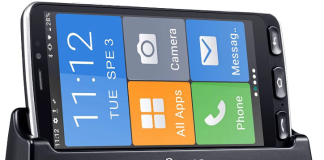
There is no question that someone can survive even a day without glancing at a mobile screen. That’s because mobile phones are being used for everything.
We communicate, work, shop, and even entertain ourselves by using a mobile phone. And to do all these activities, there’s an involvement of an app.
Do you need to track your fitness? Download an app! Do you need to order lunch? Order right away by launching an app! There are a gazillion apps available on the App Stores from industries including lifestyle, education, entertainment, gaming, and whatnot.
However, we’re not here to discuss the popularity of apps today. How an app performs is what you should be focusing on in this article. That’s because if a user is navigating through an app that is buggy then it will never make it in the market.
That’s why you need to make sure that you keep the optimization factor in mind while developing your app in each phase.
Now we’re aware that hiring an Android or iPhone app development company is no big deal to build a top-class mobile app. We also know that besides development as such, you should invest in strategic customer engagement. That’s why many businesses today turn to a customer engagement platform that helps them boost engagement and convert that into revenues.
However, you should still learn the ins and outs of performance optimization to reach your ultimate marketing goals.
In this article, we’ll walk you through the insights on how you can optimize your mobile app to achieve your business goals.
So let’s get started without any further ado!
Measure Mobile App Performance Metrics
Assessing mobile app performance is crucial; tracking response times and error rates to pinpoint areas for improvement and deliver a smoother user experience.
Here’s how you can measure mobile app performance metrics:
Define Clear Performance Goals
Start by setting specific performance goals for your mobile app. Understand what constitutes good performance for your target audience and identify key metrics to measure against those goals.
Monitor Response Times
Track the app’s response times for different actions, such as loading screens, accessing data, and executing functions. Slow response times can be a major user frustration.
Analyze CPU and Memory Usage
Monitor the CPU and memory consumption of your app. High usage can lead to app crashes and sluggish performance. Identify areas of your code that are resource-intensive.
Check Network Latency
Assess network latency and how it affects your app’s performance. Slow network connections can lead to delays in data retrieval and app functionality.
Examine Error Rates
Keep an eye on error rates and exceptions. Frequent errors can indicate bugs or issues that need immediate attention.
Track User Interaction Metrics
Analyze user interaction metrics, such as gesture response times and touch input delays. Ensure that the app responds promptly to user actions.
Identify Common Performance Bottlenecks
Spotting common performance bottlenecks is key: profile code and optimize resources to ensure your mobile app runs at peak performance, delighting users with seamless experiences.
Here’s how you can identify common performance bottlenecks:
Performance Profiling
Utilize profiling tools to identify specific functions or code sections that consume excessive CPU or memory, causing slowdowns.
Network Traffic Analysis
Analyze network requests and responses to pinpoint slow or redundant data transfers that can hamper app performance.
Memory Leaks Detection
Regularly inspect for memory leaks to ensure that your app isn’t gradually consuming more memory than necessary.
UI Rendering Bottlenecks
Examine the UI rendering process for lags, and optimize by reducing complex views or unnecessary animations.
Database Queries Optimization
Optimize database queries by minimizing the number of requests and ensuring they are well-indexed and efficient.
Image and Resource Compression
Compress images and resources to reduce the app’s size and speed up loading times.
You can achieve all of these traits in your mobile app if you partner up with a reliable mobile app development company. However, do your research first before hiring any agency.
Optimize User Interface and User Experience
Enhance app performance by refining the user interface and experience: streamline design elements and incorporate user feedback for a smoother mobile journey.
Here’s how you can optimize user interface and user experience:
Streamline UI Elements
Simplify and declutter your UI by removing unnecessary buttons, menus, and widgets to create a clean and intuitive interface.
Use Efficient Animations
Utilize lightweight animations and transitions that enhance the user experience without overburdening the app’s performance.
Optimize Images and Media
Compress images and videos to reduce file sizes, ensuring faster loading times without compromising visual quality.
Implement Lazy Loading
Employ lazy loading techniques for images and content to load them only when they are needed, reducing initial load times.
Responsive Design
Ensure your app’s UI is responsive to different screen sizes and orientations, providing a consistent experience across devices.
Caching
Implement smart caching mechanisms to store frequently accessed data, reducing the need for repeated network requests and improving app responsiveness.
Implement Caching and Data Optimization
Boost mobile app performance with effective caching and data optimization: reduce loading times and deliver a more responsive user experience through intelligent data management.
Here’s how you can implement caching and data optimization for your mobile app:
Selective Caching
Cache frequently accessed data and resources, such as images, to reduce server requests and load times for users.
Expiration Policies
Implement caching with appropriate expiration policies to ensure that cached data remains up-to-date and relevant.
Cache Invalidation
Develop a strategy for cache invalidation to remove outdated or irrelevant data from the cache when necessary.
Compression
Compress cached data to reduce storage space and improve data retrieval speed.
Content Delivery Networks (CDNs)
Utilize CDNs to cache and distribute static assets like images and videos to geographically dispersed servers, reducing latency for users.
Offline Caching
Enable offline caching to allow users to access previously viewed content even when they have limited or no internet connectivity.
Manage Background Processes and Battery Drain
Efficiently control background processes and battery usage: prioritize tasks and enhance the mobile app experience while conserving device battery life.
Here’s how you can manage background processes and battery drain for your mobile app:
Background Task Prioritization
Prioritize background tasks based on their importance and impact on app functionality, allowing critical tasks to be completed first.
Background Execution Limits
Adhere to platform-specific background execution limits to prevent excessive background processing, which can drain the device’s battery.
Scheduled Updates
Schedule data updates and background tasks during low-usage periods to minimize interference with user activities.
Location Services Optimization
Use location services sparingly and intelligently, reducing the frequency of location updates to conserve battery life.
Push Notifications
Limit the use of push notifications and consider batching them to reduce the frequency of background wake-ups.
Background Fetching
Implement background fetching techniques to update content and data efficiently, avoiding constant polling that can drain the battery.

Taylor is a freelance SEO copywriter and blogger. His areas of expertise include technology, pop culture, and marketing.














